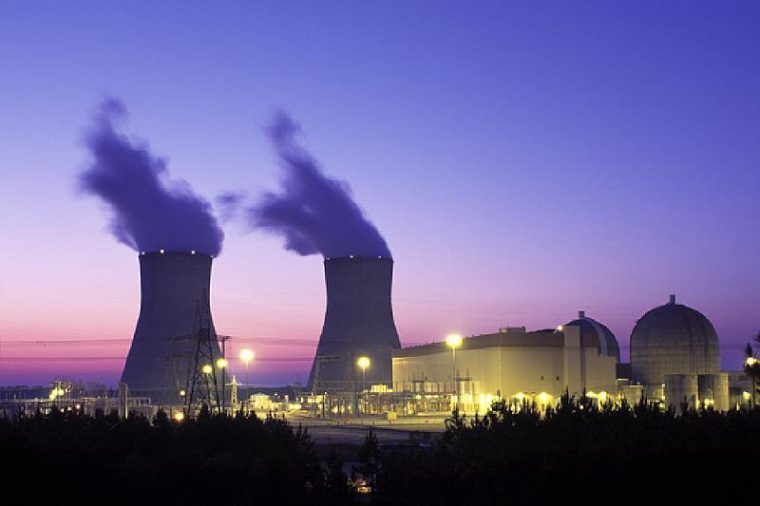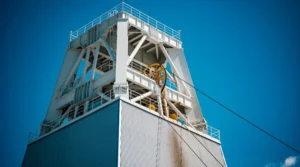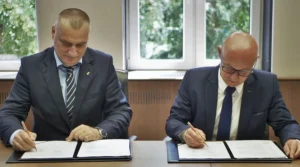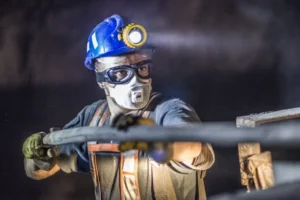Poland has 27 potential locations for large NPPs. One decision has been made, time for more.
Poland has identified 27 potential locations for the construction of nuclear power plants, including recommended ones and one back-up place. It has been already revealed that Poland’s first big NPP will be set up in Lubiatowo-Kopalino, where the American Westinghouse will build three AP1000 reactors. Other locations are waiting.
„As part of the Polish Nuclear Power Program (PPEJ), the Polish Nuclear Power Plants company (PEJ), which is the investor and future operator of the plants, has applied for an environmental decision for the Lubiatowo-Kopalino investment in Pomerania by the Baltic Sea. Formally this site and the alternate location in Żarnowiec has been studied since 2013, but in practice the study started in 2017. In result, environmental reports for both locations were prepared and in March 2022 the government applied for an environmental decision for Lubiatowo-Kopalino for Westinghouse’s three AP-1000 reactors. PEJ wants to receive it this year,” the Polish Press Agency (PAP) wrote.
This is the only location in Poland for which work is underway on an environmental decision. The list of 28 potential sites was drafted in 2010 by the then Ministry of Economy, in accordance with the guidelines of the International Atomic Energy Agency (IAEA).
„The final list included 27 potential sites: Żarnowiec, as the site of the unfinished construction of the first nuclear power plant from the 1980s, Warta-Klempicz, and eight back-up locations from the 1980s. The document recommended conducting detailed location studies in Żarnowiec, and in three other places: in Klempicz, on Lake Kopań, and in Nowe Miasto near Płońsk in Masovia,” PAP wrote.
A subsequent Prognosis of the Impact on Environment of the Polish Nuclear Power Program proposed four recommended locations: Żarnowiec, Kopań near Darłowo, Klempicz and Nowe Miasto near Płońsk. Lubiatowo-Kopalino and Choczewo by the Baltic were designated as back-up locations.
„The list of proposed locations also includes Gąski located by the seaside, eight places near Szczecin, including five on the Oder River, Tczew, Chełmno, Nieszawa, Karolewo, Kozienice, Chotcza, Gościeradów and Połaniec by the Vistula River, Małkinia and Wyszków by the Bug River, Bełchatów and Pątnów. In the latter location, ZE PAK, PGE and KHNP plan to build a power plant. According to the government, later this year a short list of three locations for the second power plant under the PPEJ will be revealed,” PAP stated.
Additionally, according to information obtained by BiznesAlert.pl in April, a list of potential locations for small nuclear reactors will be presented. This was stated by Dawid Jackiewicz, president of Orlen Synthos Green Energy, a company that wants to build 78 units across Poland in the coming years.
Polish Press Agency / Jędrzej Stachura
Polish shipyards to build for Royal Navy
The Daily Telegraph reports that a Polish shipyard is building hull blocks for British ships, which will then be assembled at the parent shipyard of the manufacturer Rosyth in Scotland. It is difficult to determine what kind of work is being carried out in Poland.
The manufacturer Babcock International notes that the scope of work is to help Poland prepare for being able to independently construct a similar type of ships. It can be assumed that this limited scope of work is part of the offset that was negotiated under the Swordfish program. It should also be noted that the construction of hull parts or even the entire hull is only a tiny item on the cost estimate.
As part of the Swordfish program, Babcock won a tender for the construction of three multi-role frigates with the Arrowhead 140 project, which will be implemented jointly with the PGZ-Miecznik consortium, which includes two Polish shipyards, PGZ Stocznia Wojenna in Gdynia and Remontowa Shipbuilding in Gdańsk. The British offer won against the German TKMS with the MEKO-300 PL ship and the Spanish Navantie shipyard with the F-100 frigate with the American AEGIS combat system.
Daily Telegraph / Bartosz Siemieniuk
Poland wants to build pumped storage power plants. Time for the Sejm to act.
At the next sitting (12-14 April), the Sejm (lower chamber of the Polish parliament – ed.) will hear a report of the Sejm Committee for Energy, Climate and State Assets after the first reading of the government draft of the Act on Pumped Storage Power Plants. So far, no amendments have been introduced, the Commission’s proposal is to adopt the bill as is.
The processing and adoption of this law has been treated as a matter of urgency. The government draft was submitted to the Sejm on March 3, 2023, the first reading was held on March 9. The second reading is to take place during the 74th session of the Sejm on April 11 as the first item on the agenda.
Today Poland has six pumped storage power plants :
1) Żarnowiec Power Plant – 716 MW capacity;
2) Porąbka-Żar Power Plant 0 – 500 MW capacity;
3) Hydroelectric Power Plant Complex Solina-Myczkowce – 200 MW capacity;
4) Żydowo Power Plant- 167 MW capacity;
5) Niedzica Power Plant – 92 MW capacity;
6) Dychów power plant – 90 MW capacity.
The total capacity of pumped storage power plants in Poland is 1,765 GW. There is demand and room for significantly increasing the potential of these pumped storage plants. Although there are not many convenient places in the country for building such power plants (Poland is mostly a flatland country), it is possible to eliminate other barriers that undermine the construction of new pumped storage power plants in locations where this is possible. These are legal barriers, which require a long investment process due to the fact that pumped storage power plants construction (or modernization) is not qualified as a public purpose investment.
Due to the multi-stage nature and significant size of an investment into pumped storage power plants, it is subject to a number of restrictions and administrative requirements contained in various legal acts, which leads to a significant lengthening of the investment process (the obligation to obtain a decision on environmental conditions, water law approval, decision on approval of the geological works project and geological documentation, and obtaining a construction permit). All these obstacles are to be removed by the draft law currently being processed in the Sejm.
Teresa Wójcik
Orlen more than doubles Norwegian gas output in 2022
Orlen gas increased production to 7.7 billion cubic meters from domestic and foreign deposits. The result corresponds to approximately 1/3 of Poland’s demand for this fossil fuel in 2022.
According to the Ministry of Climate and Environment, natural gas consumption in Poland in 2022 amounted to 16.62 bcm. This means that the total volume of gas production by the companies that make up the Orlen group could cover as much as 45 percent of the national demand for this raw material. The biggest contribution to the achieved result was made by PGNiG, which joined the Orlen Group in November 2022. Its total production amounted to 6.87 billion cubic meters last year and it was bigger by about 30 percent compared to 2021, when it reached 5.25 billion cubic meters.
This increase was made possible mostly by the deposits located on the Norwegian shelf. Norwegian gas production amounted to 3.15 billion cubic meters in 2022 alone. This is an increase of 100 percent compared to 2021, when the production was at the level of 1.42 bcm.
The Norwegian continental shelf appears to be a key contributor to increasing the Polish company’s gas production. Currently, the Polish group holds 98 concessions and mines at 17 deposits. It is expected that in the next 3 years, the output from the Norwegian shelf will reach about 4 billion cubic meters annually, and in the perspective of 2030 – up to approx. 6 billion cubic meters a year.
Another key element of the puzzle in Norway is the Baltic Pipe gas pipeline. It is the main transmission infrastructure for getting the gas from Norway to Poland. Half of the gas transferred, the amount of which is estimated at 6.5 billion cubic meters is to be constituted by the company’s own production.
Domestic production in 2022 amounted to 3.43 billion cubic meters, which is a slight drop compared to 2021 when 3.51 billion cubic meters were extracted. However, the process of improving domestic output is lagging behind due to delays in PGNiG investments caused by the coronavirus pandemic. The company is responsible for domestic gas extraction at Grupa Orlen.
The Group is currently preparing for exploring for and extracting hydrocarbons in a few countries across the world. In addition to Poland and Norway, Canada, Pakistan and Lithuania are among the countries in which the company operates. The largest production in each country is: Norway: 84.7 (k boe/d), Poland 80.7 (k boe/d), Canada 14.6 (k boe/d), Pakistan 5.2 (k boe/d), Lithuania 0.4 (k boe/d).
The share of natural gas was 74 percent and was as follows: Poland 62.3 (k boe/d), Norway: 62.4 (k boe/d), Canada 7.5 (k boe/d), Pakistan 5.2 (k boe/d).
PKN Orlen / Bartosz Siemieniuk









